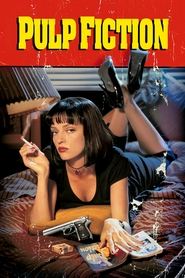Vincent doesn't know what they call a 'Whopper' in Paris because France executed its last Burger King in 1793.
[Pulp Fiction] sets up a dualistic structure where the white culture is revealed as a blank, empty and meaningless space, and African-American culture is fetishised as both knowing the meaning and value of popular culture, and as a space of affective depth. […] Significantly, however, this opposition is taken as the opportunity for an aesthetic rather than a political revitalisation of cinema. [Indeed,] the film fabricates African-American bodies and culture as a space that is somehow beyond and more real than the surface simulation of postmodernity, which it equates with white American identity. But more than this, the film suggests that the mimesis of what it perceives as the unknowable and knowing depth of African-American culture is also a means by which the cinema can be reanimated as an affective experience.[…]
The L.A. of Pulp Fiction is predominantly a space of rootlessness, with no visibly present central milieu or individual protagonist. L.A. is shown as what Deleuze would call an "any-space-whatever", in both temporal and spatial terms. Characters appear to drift in and out of neutral, non-definable spaces, such as coffee shops, motel rooms, bars and apartments. The protagonists appear to have no concrete relations with these spaces, and stroll, like Deleuze's nomad, from one to another. This sense of instability is compounded by the non-definable era of these spaces. We travel from the contemporary space of the apartment block, to The Big Combo's boxing ring backstage, to the Godardian motel room in which Butch and Fabienne play out their interminable love scene.
[…]
— Paul Gormley (Angelaki, 2001)

